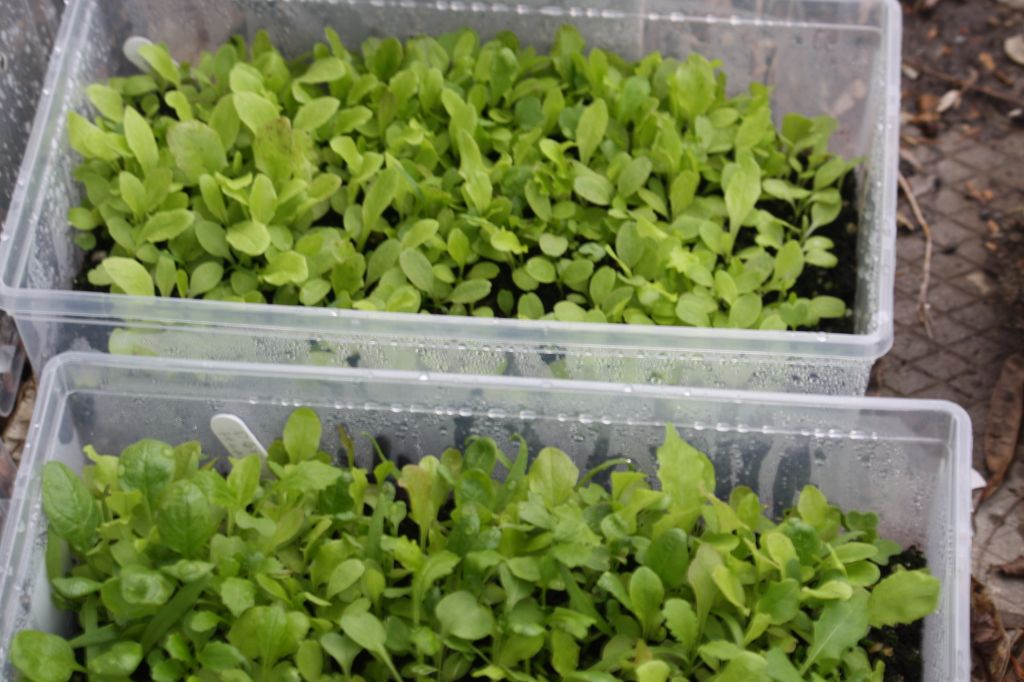Perhaps it is our incredibly mild winter or the up-and-down temperatures, but I have run into several local gardeners who have already planted some seeds or are seriously contemplating it.
Is it time to start indoor seeding of vegetables? I am talking vegetables here and not getting into the whole esoteric world of starting perennial flowers, shrubs and trees from seed.
As with many things in life, timing is all important – currently we are about 16 weeks away from the May 24 outdoor planting date for frost-sensitive plants. Peppers and eggplant can grow for ten weeks indoors or so and be healthy vigorous plants ready to plant in the garden in late May. On the other hand tomatoes need a maximum of eight weeks; otherwise they will be huge ungainly plants long before it is time to plant them in the garden. So yeah, it is far too early to start these heat-loving plants!
On the other hand celery, parsley, onions, leeks and globe artichokes benefit from a ten to 12 week head start indoors. When I mention the number of weeks growing indoors this is calculated by counting backwards from the time that the seedlings can be planted in the garden. If my goal is to have onions and leeks in the garden by the first of May and parsley and celery planted a week or two later (they have some frost hardiness so can be planted in the garden considerably before the May 24 frost-free date) then the calculation results in an indoor seeding date of precisely February 15 (just kidding – nature is a lot more flexible than this – this could easily be a couple of weeks earlier or later). So if you are planting onions, leeks and parsley under lights you’re in the right ball park!
A couple of gardeners were asking me about planting seeds in plastic containers (such as the large ones that salad greens are sold in) and then placing the containers outdoors. This was something that I tried a couple of years ago in 2014 after reading a gardening column in the Ottawa Citizen by Ailsa Francis. It was the perfect introduction to winter sowing of seeds in plastic containers and placing them outdoors (yes, outdoors!!). The concept is reported to work for perennial plants and for cold-hardy vegetables and annuals. A good clue is whether the plant self-seeds. It is especially suitable for seeds that need cold stratification (alternate periods of freeze and thaw) or for seeds that have a very tough outer coating. I have had limited success starting perennial plants from seeds so this was an experiment that I was keen to try.
The first step is to pre-moisten the growing medium – the one I use is about two-thirds peat moss so it takes a bit of effort to get it moist. I dump the bag into a large container adding about a watering can of water as I go and mix it vigorously. The final product should be moist but not wet (water should not run out if you squeeze a handful).

I started with a half-dozen rigid plastic containers measuring 7 inches by 12 inches by 4 inches deep that I had bought at Home Depot for the deeply discounted price of 88 cents each. I then drilled about 8 holes in the bottom for drainage and about 8 in the top for air circulation. I then added about 2 and a half inches of a moistened soil-less seedling mixture, sprinkled the seeds on top, and covered with growing mix according to packet instructions. The seeds I tried include Helenium, Joe Pye, Little Blue Stem (a perennial grass), sweet peas, calendula, stocks, arugula, a lettuce mix, a mesclun mix and onions. Everything was then carefully labelled. The lids were snapped on and I placed them outdoors on a raised flower bed on the first day of February so that I could see if the squirrels were unduly curious about them.




As the following photos showed the results were mixed – certainly the mesclun and lettuce mixes were showing very good growth by the first of May. The perennials not so much!


So three months after planting the seeds in the plastic boxes, I transplanted the greens into the garden. I built a three-foot by eight-foot box out of eight-inch wide cedar planks. I decided to use a modified ‘lasagne’ technique as I judged the soil too wet to dig in. I added some wheelbarrow loads of screened top-soil (that was conveniently stored in a pile under a tree) and mixed in a couple of bags of mushroom compost. I then dug some short furrows and transplanted clumps of lettuce and other greens. The bed was ready for harvest in a few short weeks.



Remember to circle the date of Saturday February 20 on your 2016 calendar when Seedy Saturday comes to Almonte. It will take place at the Civitan Club on February 20 from 9am to 3pm. Seedy Saturdays are relatively informal events with seed and other vendors, educational workshops, information booths for not-for-profit groups, informal seed swaps and on and on. For more details on the great network of Seedy Saturday events taking place across the country, check out the Seeds of Diversity website.
I have agreed to lead a workshop and I know that there will be lots of excellent presenters. This event is being supported by our area Horticultural Societies, the Neighbourhood Tomato Community Gardening Association, the Lanark Master Gardeners, the Canadian Organic Growers and the Seed Library at the Almonte Library. It promises to be another amazingly successful Almonte event and a terrific opportunity for gardeners from the area to network, for local producers to showcase their wares and for learning.


